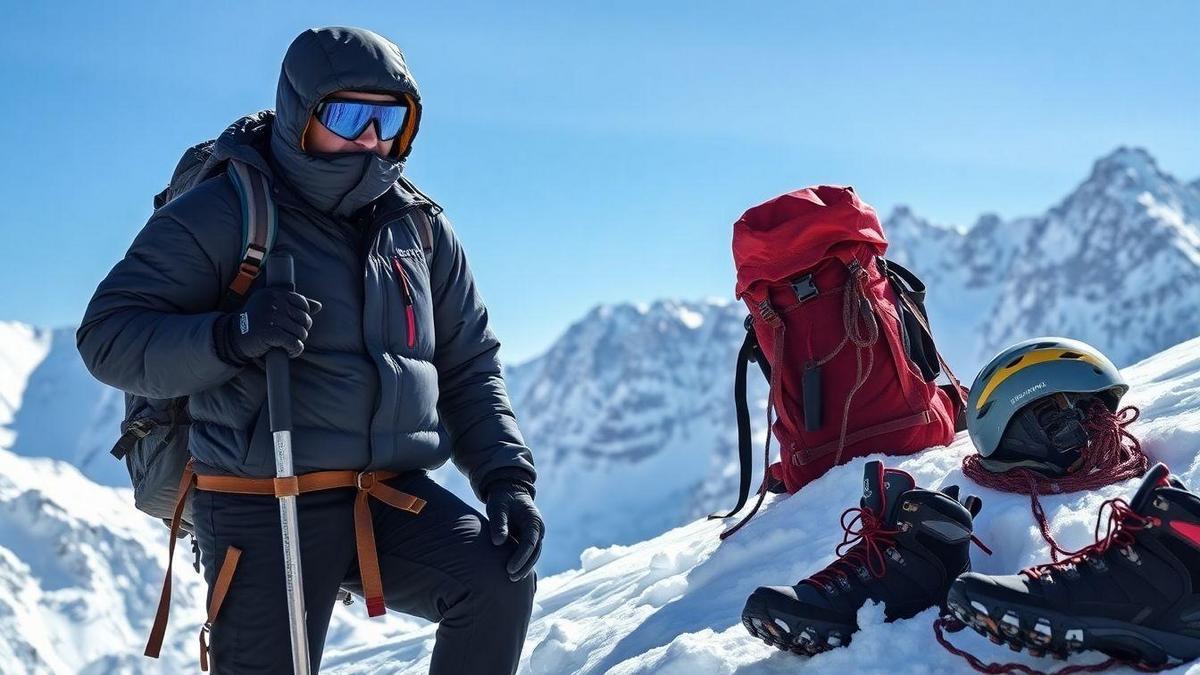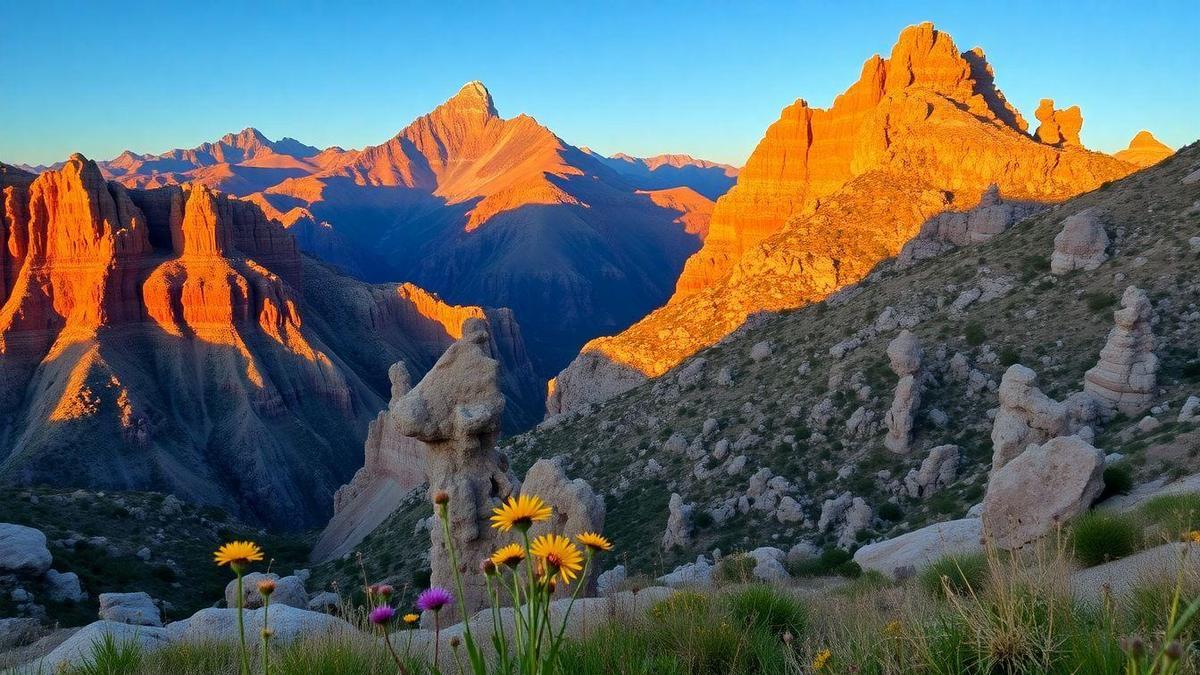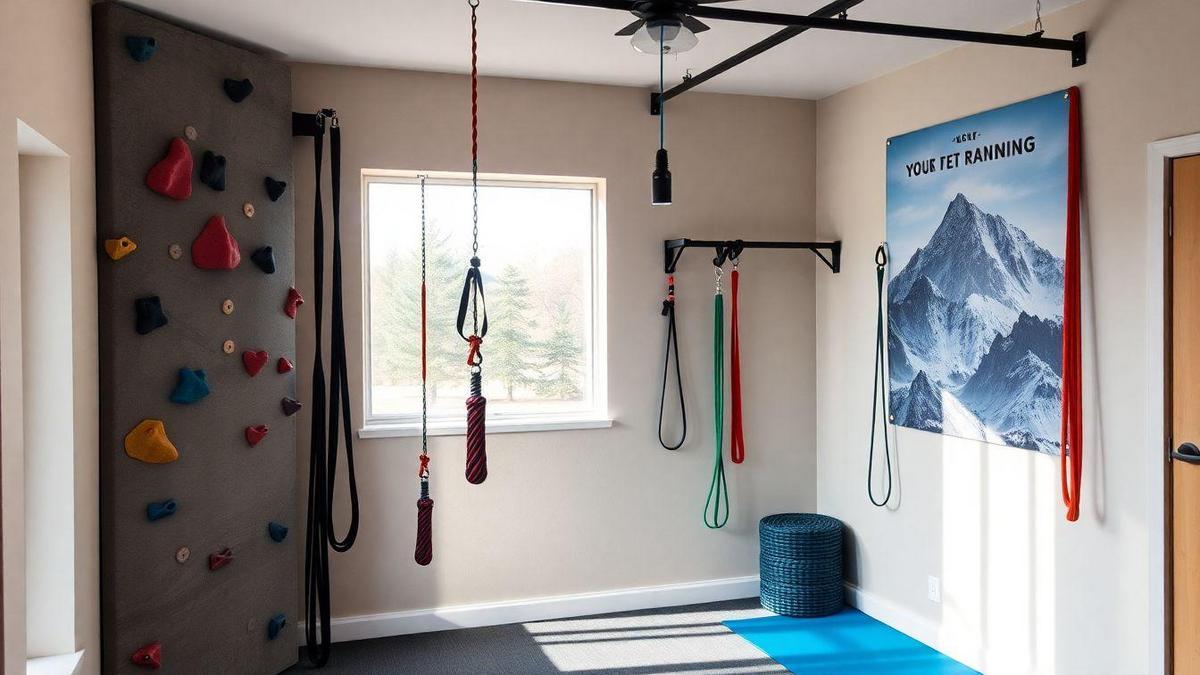
Understanding Essential Gear for Winter Mountain Climbing Expeditions
Importance of Winter Mountaineering Gear
When you’re gearing up for a winter mountain adventure, having the right gear is crucial. The snow and cold can turn a fun climb into a serious challenge. Good gear keeps you safe and comfortable. Imagine standing on a snowy peak, feeling the wind whip around you. That’s exhilarating, but without the right equipment, it could also be dangerous.
Choosing the Right Essential Climbing Equipment
Selecting the essential gear for winter mountain climbing expeditions can feel overwhelming, but it doesn’t have to be. Think of it like packing for a road trip. You wouldn’t leave without snacks, a map, and warm clothes, right? Here’s a list of must-have gear:
- Insulated jacket: Keeps you warm in freezing temperatures.
- Waterproof pants: Protects you from snow and moisture.
- Climbing boots: Offers grip and warmth.
- Ice axe: Essential for stability on icy slopes.
- Crampons: Provides traction on ice.
Factors to Consider When Selecting Gear
When you’re picking out your gear, consider these important factors:
| Factor | Description |
|---|---|
| Weather | Check the forecast to choose gear that matches conditions. |
| Duration | Longer climbs need more robust equipment. |
| Skill Level | Choose gear that matches your climbing experience. |
| Weight | Lighter gear can make your climb easier. |
Always think about your personal needs. For example, if you easily get cold, prioritize a warmer jacket. Or if you’re new to climbing, look for gear that offers extra support.
Must-Have Clothing for Cold Weather Climbing
Key Features of Mountain Climbing Clothing
When you’re out there on the mountain, staying warm and dry is your top priority. The right clothing helps you face the cold without feeling overwhelmed. Here are some key features to look for in mountain climbing clothing:
- Waterproofing: Keeps you dry from rain and snow.
- Breathability: Allows sweat to escape, preventing you from getting cold.
- Insulation: Provides warmth without adding too much weight.
- Durability: Can withstand rough conditions and rough terrain.
Layering Techniques for Thermal Comfort
Layering is like building a cozy blanket around yourself. Each layer serves a purpose. Here’s how to do it right:
- Base Layer: This layer sits next to your skin. It should wick away moisture. Think of materials like merino wool or synthetic fabrics.
- Mid Layer: This is your insulation layer. Fleece or down jackets work well here, trapping heat.
- Outer Layer: This is your shield against wind and water. Look for waterproof jackets that are also breathable.
Here’s a simple table to visualize the layers:
| Layer Type | Purpose | Material Options |
|---|---|---|
| Base Layer | Moisture-wicking | Merino wool, synthetic |
| Mid Layer | Insulation | Fleece, down |
| Outer Layer | Protection from elements | Waterproof jackets |
Best Materials for Cold Weather Gear
Choosing the right materials can make or break your climbing experience. Here are some of the best options:
- Merino Wool: Soft, warm, and naturally moisture-wicking.
- Fleece: Lightweight and provides great insulation.
- Gore-Tex: Perfect for waterproofing while allowing breathability.
- Down: Lightweight and super warm, ideal for insulation layers.
When you gear up with the right clothing, you’re setting yourself up for success. You’ll feel comfortable and ready to tackle whatever the mountain throws your way.
Tools You Need for Snow and Ice Climbing
When you’re gearing up for a snow and ice climbing adventure, having the right tools can make all the difference. Whether you’re a seasoned climber or just starting, understanding what you need is crucial. Let’s dive into the essential gear for winter mountain climbing expeditions.
Types of Snow and Ice Climbing Tools
Here’s a handy list of the tools you’ll want to pack:
| Tool | Purpose |
|---|---|
| Crampons | Attach to boots for grip on ice and snow. |
| Ice Axes | Help with balance and self-arrest in case of a slip. |
| Harness | Keeps you secure while climbing. |
| Ropes | Essential for safety and belaying. |
| Carabiners | Connect different pieces of gear safely. |
| Snow Shovel | Useful for digging out and creating a safe space. |
Each tool plays a vital role in your safety and success on the mountain. Crampons give you traction, while ice axes help you maintain control. Don’t underestimate the importance of a good harness and ropes; they are your lifeline in tricky situations.
How to Use Climbing Tools Safely
Using your tools safely is key to enjoying your climb. Here are some tips to keep in mind:
- Practice Before You Go: Familiarize yourself with each tool. Try them out in a safe environment.
- Check Your Gear: Before you start, inspect everything. Look for wear and tear. A small crack can lead to big trouble.
- Stay Aware: Always be mindful of your surroundings. Watch where you step and be cautious of ice conditions.
When you’re out there, remember that every tool is a partner in your climb. Treat them with respect, and they’ll help you conquer the mountain.
Essential Maintenance for Climbing Equipment
Taking care of your gear is just as important as using it correctly. Here’s how to keep your climbing tools in top shape:
- Clean After Use: Remove dirt and ice from your tools after each climb. This helps prevent rust and damage.
- Store Properly: Keep your gear in a dry, cool place. Avoid leaving it in your car or damp areas.
- Regular Inspections: Check for any signs of damage regularly. If something looks off, it’s better to replace it than risk your safety.
By maintaining your equipment, you’ll extend its life and ensure it performs when you need it most.
Winter Safety Equipment for Climbers
Importance of Avalanche Safety Gear
When you’re out in the snowy mountains, avalanche safety gear is your best friend. Imagine climbing high, surrounded by stunning views, but then suddenly, the ground beneath you shifts. That’s where gear like avalanche beacons, shovels, and probes come into play. These tools can help you find someone buried under the snow or dig yourself out if the worst happens.
Here’s a quick breakdown of why this gear is so important:
| Gear | Purpose |
|---|---|
| Avalanche Beacon | Sends out signals to locate buried climbers. |
| Shovel | Used to dig out snow quickly. |
| Probe | Helps pinpoint the exact location of a buried person. |
Having these items can make a life-saving difference. You wouldn’t want to head into the mountains without them, right? It’s all about being prepared for what nature throws at you.
Essential First Aid Supplies for Expeditions
No one plans for accidents, but they can happen. Carrying the right first aid supplies can help you handle minor injuries or emergencies. Think of it like packing an umbrella on a sunny day—you hope you won’t need it, but you’re glad to have it if the clouds roll in.
Here’s a list of first aid essentials you should pack:
- Adhesive bandages for cuts and scrapes.
- Gauze pads for larger wounds.
- Antiseptic wipes to clean injuries.
- Pain relievers for headaches or muscle aches.
- Elastic bandages for sprains.
Having these supplies can make your time on the mountain much safer. If someone gets hurt, you can take care of them right away, which is incredibly important in the wild.
Preparing for Emergencies on the Mountain
Emergencies can pop up when you least expect them. It’s like the mountain has a mind of its own. To be ready, think ahead and plan for different scenarios. Here are some tips to help you prepare:
- Know your route: Familiarize yourself with the area and possible hazards.
- Communicate: Make sure everyone in your group knows what to do in case of an emergency.
- Practice: Go over your first aid skills before you hit the trails.
By preparing for emergencies, you’re not just looking out for yourself but also for your climbing buddies. It’s all about teamwork and safety.
Winter Hiking Accessories to Enhance Your Climb
The Role of Navigation Tools in Winter Expeditions
When you set off on a winter hike, navigation tools are your best friends. Just like a compass guides a ship through stormy seas, these tools help you find your way in the snowy wilderness. A good map and a reliable GPS device can keep you on track, even when the landscape looks like a white blanket.
Imagine standing at the base of a towering mountain, snow swirling around you. You pull out your GPS and realize you’re heading in the right direction. That feeling of relief? Priceless. Having a compass and a map as backup can also save the day if your technology fails.
Choosing the Right Footwear for Winter Hiking
Your feet are your foundation. If they’re not comfortable, your whole hike can feel like a slog through molasses. Winter hiking boots should be waterproof, insulated, and have a good grip. Look for boots that fit snugly but not too tight. You want to keep your toes warm and cozy, but still have enough room to wiggle them.
Here’s a quick comparison of features to look for in winter boots:
| Feature | Importance |
|---|---|
| Waterproof | Keeps your feet dry in snow |
| Insulation | Keeps your feet warm |
| Traction | Prevents slipping on icy surfaces |
| Comfort | Reduces fatigue on long hikes |
With the right boots, you can conquer any snowy trail.
Must-Have Accessories for Comfort and Safety
When you’re out in the cold, comfort and safety are key. Here’s a list of must-have accessories:
- Warm gloves or mittens: Keep your fingers toasty.
- A thermal hat: Protects your head from the chill.
- Gaiters: Stop snow from sneaking into your boots.
- Sunglasses: Shield your eyes from the sun’s glare on the snow.
Each of these items plays a role in keeping you warm and safe. Picture yourself trudging through deep snow, and your fingers are freezing. You reach for those gloves, and suddenly, you feel like you can take on the world again.
Planning Your Gear for a Successful Expedition
Creating a Checklist for Winter Expedition Essentials
When you’re gearing up for a winter mountain climbing adventure, having a checklist can be your best friend. This list helps you remember what you need, so you don’t leave anything behind. Here’s a simple list of essential gear for winter mountain climbing expeditions:
- Warm Clothing: Layering is key! Think thermal base layers, insulated jackets, and waterproof outer layers.
- Footwear: Sturdy, insulated boots with good traction are a must.
- Climbing Gear: Ice axes, crampons, and harnesses are vital for safety.
- Safety Equipment: Don’t forget your helmet and avalanche gear.
- Navigation Tools: A map, compass, or GPS device can keep you on track.
- First Aid Kit: Always be prepared for minor injuries.
- Food and Water: High-energy snacks and a reliable water source are crucial.
How to Pack Efficiently for Mountain Climbing
Packing efficiently can make all the difference on your climb. You want to carry what you need without weighing yourself down. Here are some tips:
- Use a Good Backpack: A comfortable, sturdy backpack can help distribute weight evenly.
- Organize Your Gear: Use stuff sacks or packing cubes to keep things tidy. This way, you can find what you need without digging around.
- Pack Heavy Items Low: Keep heavier gear at the bottom of your backpack for better balance.
- Prioritize Essentials: Keep your most important items on top for easy access.
Tips for Testing Your Gear Before the Climb
Before you head out, testing your gear can save you a lot of trouble. Here are some ways to do that:
- Try Everything On: Make sure your clothing fits well and is comfortable.
- Practice Using Gear: Get familiar with your climbing tools and safety equipment.
- Test Your Pack: Load your backpack and take it for a short hike. This helps you adjust to the weight and find any discomfort.
- Check Your Equipment: Inspect everything for any damage or wear.
Frequently asked questions
What is the most important gear for winter mountain climbing expeditions?
The most important gear includes warm clothing, sturdy boots, and an ice axe. You need gear that keeps you warm and safe!
How should I choose my winter climbing boots?
Look for boots that are insulated and waterproof. Comfort and fit are key. Your feet need to stay warm and dry on every climb.
Do I need special gloves for winter climbing?
Yes, you need gloves that are warm and provide a good grip. Look for gloves that are also waterproof to protect your hands.
Is climbing gear different for winter expeditions?
Absolutely! You need gear that can handle snow and ice. Essential gear for winter mountain climbing expeditions includes crampons and a winter-specific harness.
How do I pack my gear for a winter climbing trip?
Pack lightweight gear at the bottom and heavier items on top. Keep essentials like snacks and water easily reachable. Organization helps you stay focused on your climb!


